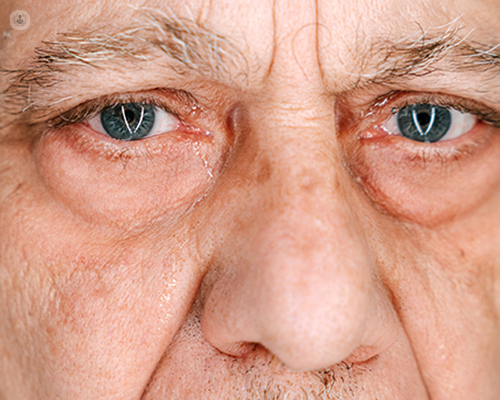Understanding dry eye
Autore:
Dry eye, also known as dry eye syndrome or keratoconjunctivitis sicca, is a common condition characterised by a lack of sufficient tears or poor-quality tears.
Here, Miss Francesca Harman, renowned consultant ophthalmologist, delves into the intricacies of dry eye, shedding light on its underlying mechanisms and its effective management and relief.

What are the symptoms of dry eye?
Dry eye can cause a wide variety of symptoms, including a sensation of having a foreign body or sand in the eye, discomfort, dryness, tiredness, or irritation. It can also cause visual symptoms – classically, intermittent blurring of the vision.
If the tear film of the eye is unhealthy or unstable, it can affect the focusing of light as it passes through the eye causing blurring. This is typically improved by blinking or by the installation of lubricant eye drops.
What causes dry eye?
Dry eye can be broadly split into two categories:
- aqueous deficient
- evaporative
Aqueous deficiency is caused by reduced tear formation found in some autoimmune conditions such as rheumatoid arthritis, lupus, or Sjogren's syndrome.
Evaporative dry eye occurs when tear production is normal but the tear film is unstable, causing tears to evaporate more quickly. This is often associated with conditions affecting the oily surface layer of the tear film such as blepharitis (inflammation of the eyelid margin), and can be exacerbated by lifestyle factors such as prolonged computer use (with reduced blinking).
Other causes include contact lens use and some medications, such as anti-depressants and acne treatments.
Any initiating cause of dry eye can lead to a cycle of inflammation and tear film instability which can then become self-perpetuating.
Is it a common condition?
Dry eye is very common, particularly in older patients. A study I performed at Hillingdon Hospitals NHS Trust assessing 500 consecutive patients attending the eye clinic found that 49 per cent of all patients had objective evidence of dry eye disease.
How is dry eye treated?
Treatment of dry eye should be directed towards the cause of dryness. For example, aqueous deficiency responds well to punctal plugs which block the tear ducts thus reducing tear drainage, along with lubricants drops to replenish tears.
Evaporative dry eye can be treated with measures such as lid cleaning and massage plus omega 3 oral supplements to improve the quality of the tear film, or lifestyle adjustments such as taking regular screen breaks, lowering the height of your screen and avoiding excessive air conditioning.
Lubricant drops are usually also required.
Once the ocular surface has become inflamed, then anti-inflammatory drops such as steroids or cyclosporin may be needed to break the inflammatory cycle, along with short courses of antibiotic drops.
Switching from preserved to preservative free topical drops can help dryness in people on long-term medication for other eye conditions such as glaucoma.
How can I prevent dry eye?
Dry eyes cannot be prevented, but they can usually be managed well with a combination of lifestyle adjustments and medication.
A diet high in omega 3 (oily fish) or supplements can help with the quality of the tear film, along with regular hot compresses or lid hygiene to manage blepharitis if present.
It is recommended to take regular screen breaks if your work involves prolonged computer use; some people also find air humidifiers useful to increase the moisture in the air and reduce the evaporation of tears.
If you are living with dry eye, and require expert ophthalmology care, arrange a consultation with Miss Francesca Harman via her Top Doctors profile today.


